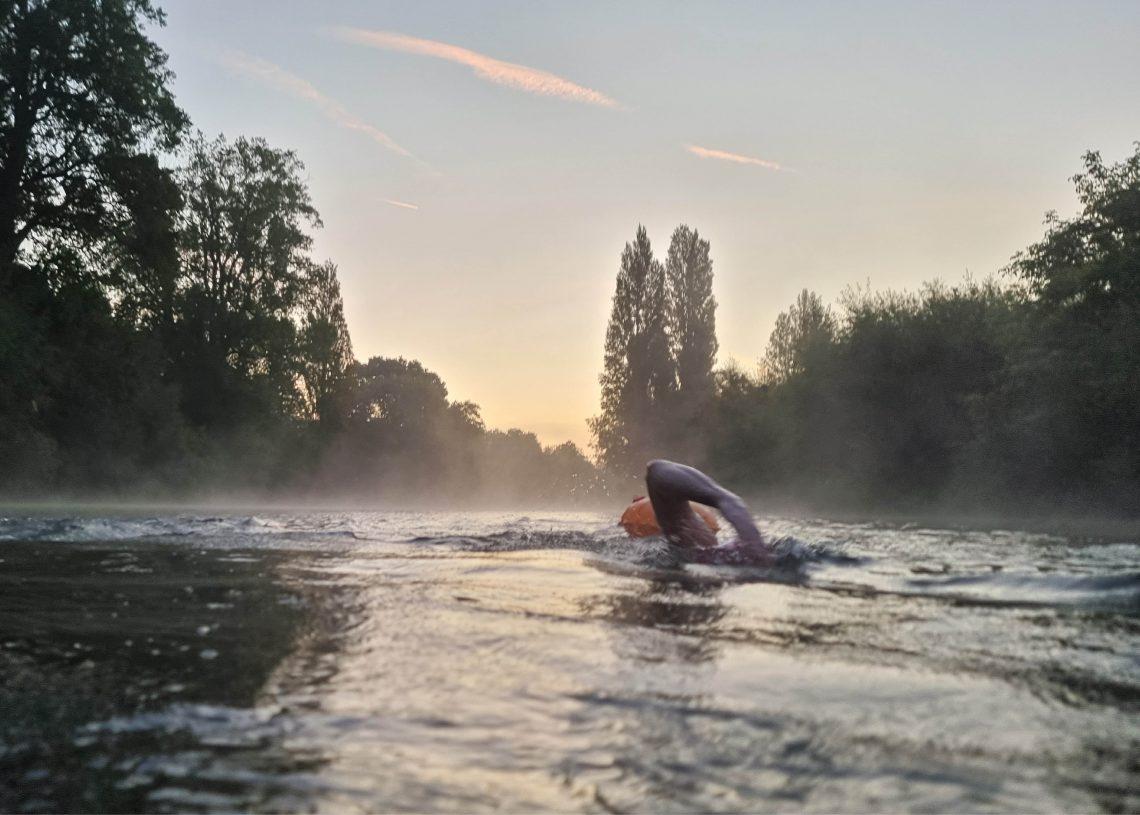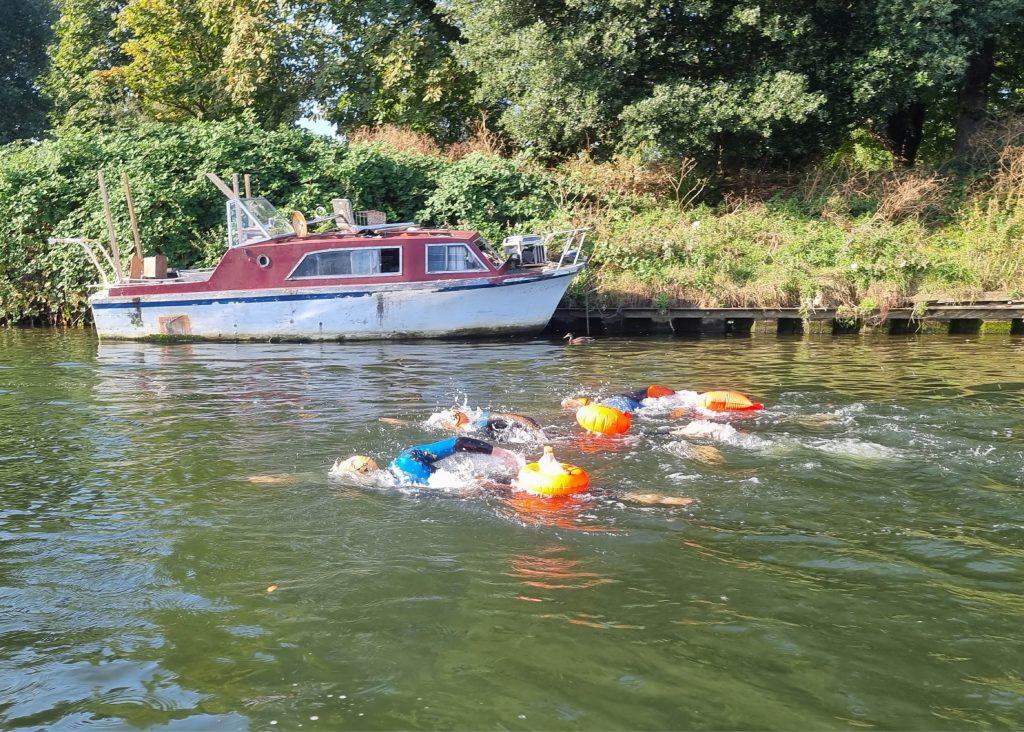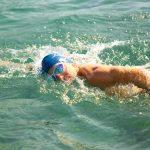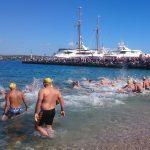
Take your front crawl outside
Adapt your swimming to open water: sighting and navigation. Simon Griffiths has your guide.
We hope you’ve followed our winter front crawl booster course and have improved your swimming over the winter. If you missed this and you’re a subscriber, you can find them in the archives in our app or on our website in Outdoor Swimmer Extra. We now want to look at taking your refined front crawl into the wild.
Front crawl is the fastest stroke and the most efficient for covering long distances. However, swimming in natural waters is a little different to the controlled conditions of the pool. You need to adapt.
At the same time, you don’t want to lose the speed and efficiencies of the beautifully crafted front crawl you’ve honed in the pool. How do you achieve this?
How to navigate when swimming front crawl
Most swimming pools have straight black lines on the bottom running the length of the pool. Good swimming technique suggests you keep your head in a neutral position, with your eyes looking almost straight down and a little ahead. To swim straight, follow the black line.
At each end, the black line ends in a T. There is no need to look forward to see where the wall is. You can tell from the T and keep your head in its ideal streamline position. Rivers, seas and lakes don’t have black lines to follow. Instead, you need to find another way to swim straight.

One way to do this is to swim next to a support boat or kayak and allow the pilot or paddler take responsibility for navigation and avoiding any hazards in the water. All you need to do is swim parallel to the boat. This is easy as you look sideways every time you breathe. You may need to have a discussion with your paddler about which side you’d prefer them to stay on, and encourage them to stay next to you, rather than surge ahead, drop back or paddle circles around you.
You can also navigate while looking sideways if you are following a shoreline. However, there is a risk you won’t spot hazards ahead of you. To navigate in all open water scenarios, you need to learn and practise good sighting technique, which involves lifting your head and looking forward.
Unfortunately, lifting your head has adverse consequences for your swimming technique. It upsets the balance of your body and may push your legs down, which harms your streamline. To facilitate lifting the head, you may subconsciously press down on the water with your leading hand. This will disrupt your catch (the first part of the stroke where you grab hold of the water) and make you less efficient.
If you want to maintain speed in open water, your sighting must cause as little disruption to your swimming as possible. The way that works best for me is to look forward just before I breathe.
When breathing to my left, the steps are as follows:
- Starting from the position with my left arm extended in front and my right arm recovering, I arch my back to lift my shoulders and head and look forward.
- I then start the catch with my left arm, trying to ensure I press water back rather than down, and kick hard with my left foot.
- As my right hand enters the water, I drop my head back into the neutral position and I start to rotate from my left to right side.
- I then take a normal breath to my left.
Note that I put my face back into the water regardless of if I’ve seen what I was looking for. If I haven’t, I will try again on the next stroke. If I have, I will swim head down for a few strokes before sighting again.
Tips, tricks and refinements
- In calm water, you should be able to see enough just by lifting your eyes above the water. There is no need to lift your full face. In rough water, you may have to lift more.
- When swimming in waves, try to time your sighting to coincide with when you are on a crest. This isn’t easy and you may have to adjust your stroke timing to manage it.
- If you fail to see what you need to after three attempts, you may need to swim a few strokes of head-up or water polo style front crawl to reorientate yourself.
- Try to find fixed objects on land to sight off. Even if you’re following a course marked by buoys, it’s often easier to spot tall objects on land behind the buoys. Do your homework before your swim to identify useful landmarks.
- Wear suitable goggles. Tinted and polarised goggles will help if you find yourself swimming towards the sun. Choose clear goggles for gloomy conditions.
- Keep your breathing and sighting separate. Don’t breathe in while looking forward.
Practise mindfully
Sighting is such an important skill in open water it’s worth dedicating practice time to improving it. Watch elite swimmers and you will see that sighting doesn’t disrupt their stroke. Less practised swimmers can almost come to a stop. Try to make the sighting movement feel like an integral part of your stroke. Keep your rhythm while sighting. Also focus on your catch while sighting and keep it strong.
Dynamic sighting
Here’s something else to try: use sighting to add momentum to your stroke. Don’t just lift your head, but also your shoulders and upper back. Then, as your hand and arm are entering the water, drive them forward by plunging your head and shoulders back into the water. This adds a slight undulation to the stroke that feels as if it helps maintain momentum. If you experiment with it, let me know how you get on.








